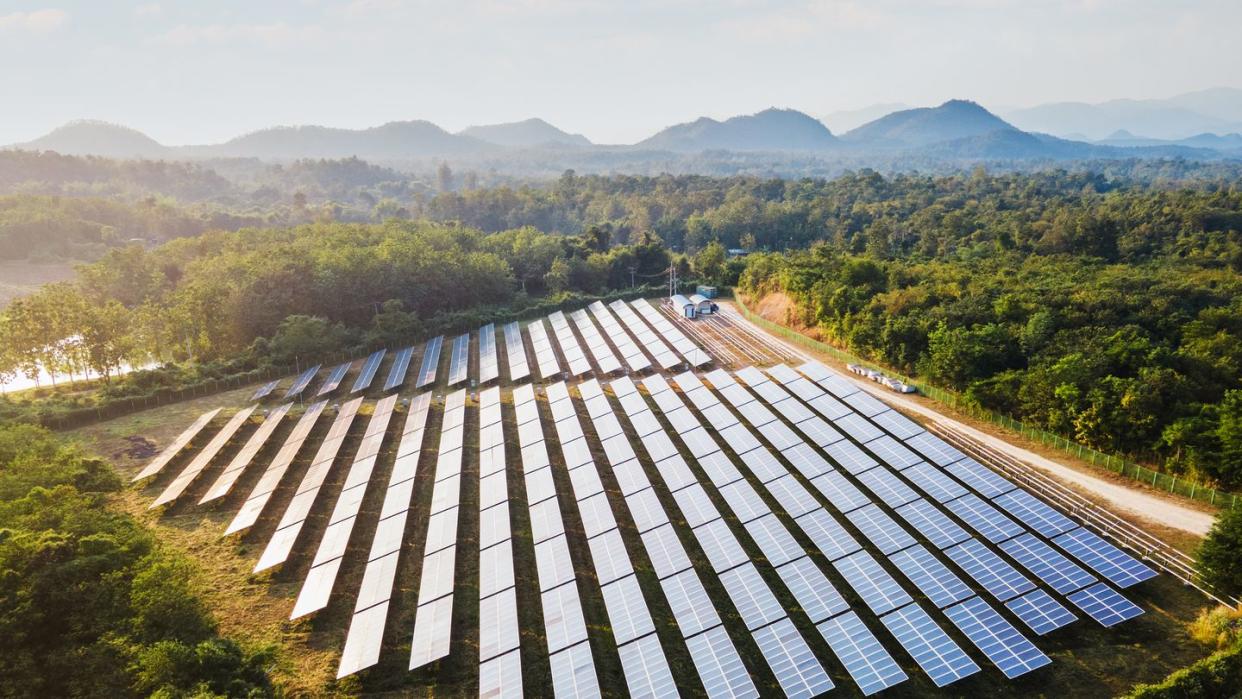It’s Official: America Is Experiencing a Solar Power Explosion Unmatched in History

In 2023, the U.S. added more solar capacity that ever before, at 32.4 gigawatts.
This added capacity surpassed any other energy source in 2023, marking the first time a renewable energy source outpaced fossil fuels since World War II.
The Inflation Reduction Act, along with the Biden Administration’s push for U.S. solar manufacturing, means these record-breaking years will hopefully be the year-after-year norm.
When reading about climate change, good news is hard to come by—hard but not impossible. Take, for example, this new report from the Solar Energy Industries Association, which states that renewables hit a milestone not seen since World War II this year. The U.S. added 32.4 gigawatts of solar capacity, which shatters the 2021 record of 23.6 gigawatts. That represents 52 percent of all added energy capacity in the U.S., with natural gas coming in a distant second with only 18 percent.
According to the environmental website Grist, California and Texas led the charge, with large utility-scale solar projects going online in 2023. With residential and commercial sectors also reaching new milestones, the solar energy industry had an all-around stellar year.
This solar boom can be attributed to a few things—chief among them the Inflation Reduction Act (IRA), which set aside roughly $369 billion for investment in and production of clean energy tech, as well as major incentives for installing rooftop solar. A dispute from a California-based solar manufacturer in 2022 also set back projects that finally came to completion in 2023, which helped further boost the year’s numbers.
But 2023 likely isn’t just some fluke, as the report also solidifies that we’re now living in the age of solar. While still only making up 5 percent of the country’s energy mix, the authors predict that, with the industry firmly established, solar capacity could grow to 500 gigawatts by 2034 (though, they also note that those outcomes could shift due to policy changes).
Texas surpassed California in terms of total solar capacity added. And CNET notes that the trend will likely continue as California launches new net metering (utilities call it “net billing”), which offers 25 percent of the original energy credit under the old system. This could disincentivize Californians to install solar panels that used to pay for themselves in 6 years— it could now can take up to a decade or longer.
This sunny outlook also arrived while the industry was facing its own collection of challenges. Things like California’s net metering policy didn’t help, but high interest rates also made it hard for some people to pull the trigger on a solar installations. In 2023 alone, around 100 residential solar dealers declared bankruptcy, often because solar companies rely on dizzying funding schemes or got caught in some less-than-reputable sales tactics.
But these troubles still didn’t detract from the fact that the U.S. just added more solar than any other energy source last year—the first time that’s happened since World War II, when the U.S. experienced a hydropower boom. And with President Biden’s push for all key components of the solar supply chain to be manufactured in the U.S., the age of solar shows no signs of stopping.
You Might Also Like

